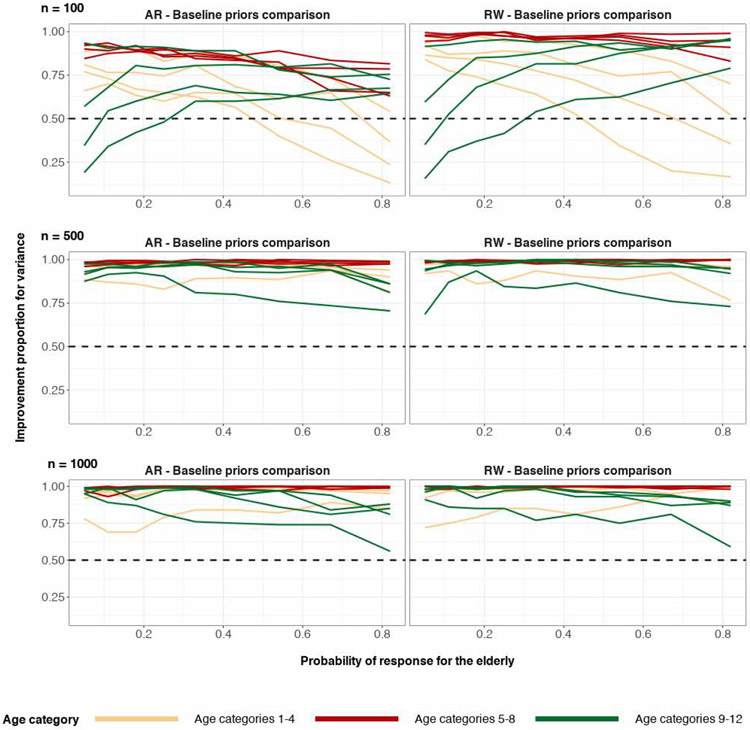Figure 33:
The proportion of the time that structured priors have lower posterior variance when compared to baseline priors, for each age category. True age preference is cap-shaped. Sample size n = 100 (top), n = 500 (middle), n = 1000 (bottom). The top and middle rows are based on 200 simulation runs and the bottom row is based on 100 simulation runs. The right column corresponds to comparison of the random-walk prior and the baseline prior for age category. The left column corresponds to comparison of the autoregressive prior and the baseline prior for age category. The horizontal dashed line y = 0.5 represents equal proportion. The difference of the 90th and 10th posterior quantiles is used as a measure for posterior variance.

